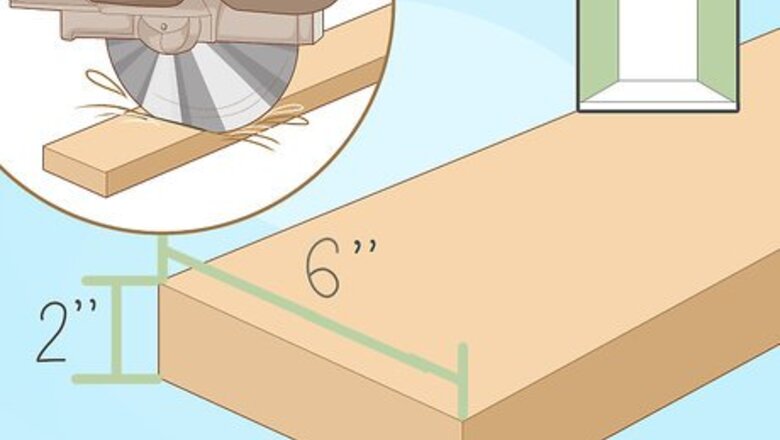
views
Framing the Shower Pan
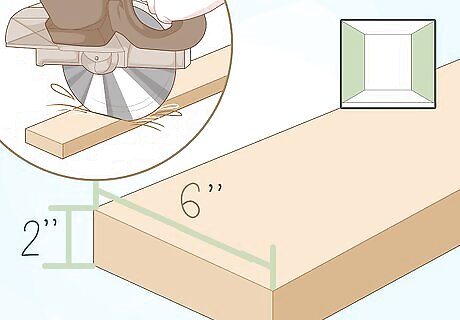
Frame out the shower pan using 2 by 6 inches (5.1 cm × 15.2 cm) boards. When deciding to install or replace a shower pan you need to consider the size and dimensions of the shower. Measure the distances between the studs on your walls where you plan on building your shower pan and write them down. Use a circular saw to cut boards that are 2 by 6 inches (5.1 cm × 15.2 cm) to size based on the measurements you took. Position the cut boards in between the studs in your walls so they’re on top of the bottom plate, which is the board at the bottom of your wall frame. If you don’t have a circular saw, you may be able to ask the employees to cut your board for you when you purchase it.
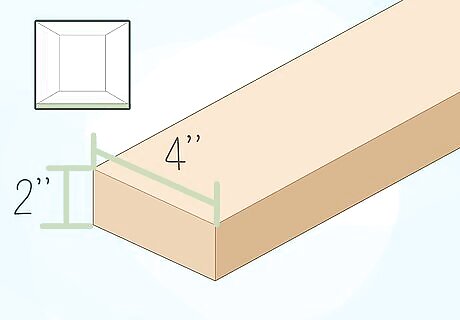
Build a curb for the shower pan using 2 in × 4 in (5.1 cm × 10.2 cm) boards. The curb is the edge of your pan that isn’t along a wall and where you would step into the shower. Find the length of the side of your shower area that doesn’t have a wall. Lay a 2 in × 4 in (5.1 cm × 10.2 cm) board that’s the length you need and nail it into the subfloor. Stack 2 more boards on top of the first one and nail them in place every 8 inches (20 cm).Tip: If you have a concrete floor, you can use bricks held together with thinset instead of wooden boards.
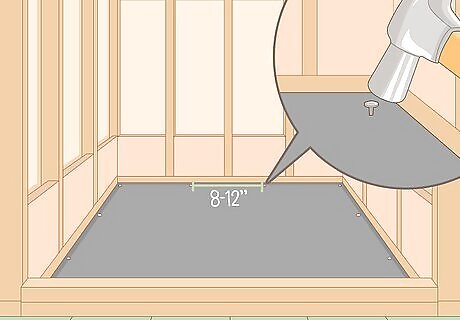
Secure a layer of tar paper to the floor to block moisture. Tar paper protects your subfloor if water ever gets underneath your shower pan. Lay a large sheet of tar paper on the entire floor of your shower pan and smooth it out as flat as possible. Drive a nail into the floor every 8–12 inches (20–30 cm) so the tar paper stays in place. You can buy tar paper from your local hardware or home improvement store. If you need to use multiple pieces of tar paper, make sure the pieces overlap by at least 2 inches (5.1 cm).
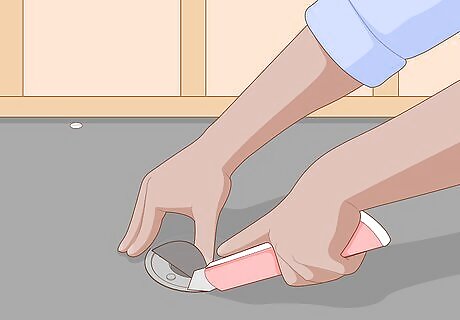
Cut a hole in the tar paper over the drain. Feel through the tar paper to locate the drain flange in your floor. Once you find it, follow along the edge of the drain with a utility knife to cut through the tar paper. Try to stay as close to the edge of the drain as you can so you don’t remove too much tar paper, or else water may be able to get to your subfloor. If you don’t already have a floor drain in place, hire a plumber to install the pipes for you so it’s done correctly. Make sure you have a 2-part drain with an upper and lower flange. You can buy 2-part drains from your local home improvement store.
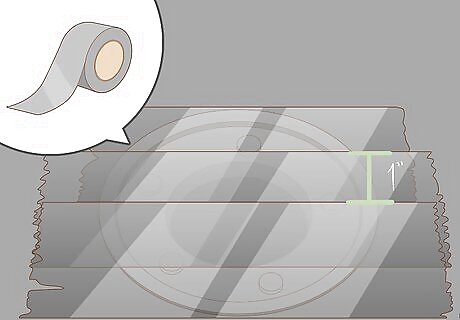
Tape the drain opening closed so mortar doesn’t get inside. Rip off pieces of duct tape and use them to cover the opening on the drain. Overlap your pieces of tape by 1 inch (2.5 cm) so it’s completely covered. Once you protect the drain with the tape, you can start applying mortar for your shower pan. If you don’t have any duct tape, you can also shove a cloth into the drain pipe to prevent mortar from getting inside.
Applying a Mortar Base
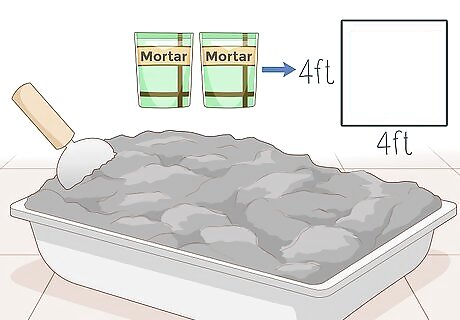
Mix mortar inside of a mixing tray with a hoe. Pour a bag of quick-set mortar into a large mixing tray and spread it out evenly. Pour in a small amount of water at a time and mix the mortar together with a garden hoe. Aim to use 1 part water for every 4 parts of mortar mix to get the right consistency. As you mix the mortar, form it into a ball and squeeze it with your hands. If water comes out, then use more of the mortar mix until the ball holds its shape. If your mortar is too runny, it will be difficult to apply since it won’t hold its shape as well. The amount of mortar you need depends on the size of your shower pan. For a 4 ft × 4 ft (1.2 m × 1.2 m) shower pan, you need approximately 2 bags that are each 30 pounds (14 kg) of mortar.
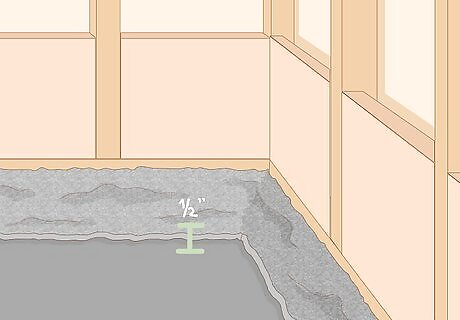
Create a 1 ⁄2 in (3.8 cm) thick border around the frame of the shower. Dump the mortar onto the tar paper so you can easily spread it around. Use a flat trowel to push and shape the mortar into a border around the shower that’s 1 ⁄2 inches (3.8 cm) thick and extends out 3–4 inches (7.6–10.2 cm) from the frame. Press down on the mortar with the trowel to compact it so there aren’t any air pockets. Shaping the border first isn’t necessary, but it makes it easier to slope later on.

Spread and smooth out the mortar so it slopes toward the drain flange. Once you have a border around the edge of your shower, start smoothing out the mortar toward the bottom flange of your drain. Start from the corner furthest away from the curb and work backward so you don’t disturb any of the mortar you’ve already worked on. Slope the mortar so it drops ⁄4 inch (0.64 cm) per 1 foot (30 cm) between the wall and the drain. The first layer of mortar doesn’t have to be perfectly smooth, but it needs to have the correct slope in order to move on. Make sure you apply the entire layer of mortar in 1 day, or else it could dry unevenly.Tip: Check the slope of your mortar with a level frequently to ensure that the floor doesn’t have any humps or valleys.
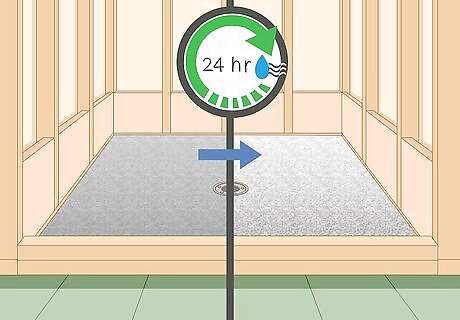
Let the mortar dry for at least 24 hours before removing the tape. Once the mortar is smoothed out as much as possible, leave it alone overnight so it can set. The mortar takes about 24 hours to set before you can start working on it again. When the mortar is dry, peel off or cut through the tape that’s covering the drain to remove it.
Waterproofing the Shower
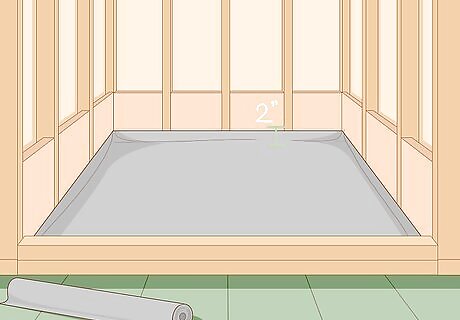
Cut shower liner so it’s 2–3 in (5.1–7.6 cm) taller than the framing. Shower liner is a waterproof barrier that serves as another layer of protection for your subfloor. Measure the size of your shower pan and add 8 inches (20 cm) to each side to account for the framing on the side. Cut the liner using a utility knife so it fits inside your shower pan. You can buy shower liner from a local home improvement or hardware store. Waterproof membranes can also be made in sheet (a blend of plastics), liquid, or foam form.
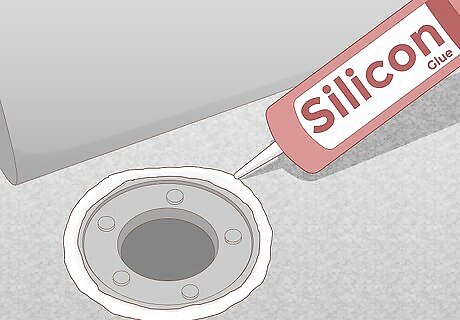
Apply a bead of silicone around the bottom drain flange to prevent leaks. Put your silicone sealant in a silicone gun so you can easily apply it to the shower pan. Follow along the outer rim of the drain’s bottom flange and squeeze the trigger to apply a thin bead of silicone. The silicone helps hold the liner in place and prevents water from getting underneath it. You can buy silicone sealant from your local hardware store.
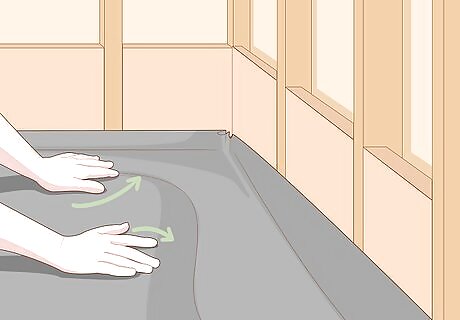
Place the liner inside your shower pan so it’s smooth. Slowly lay the liner down on the mortar and smooth it out as much as you can. Align the shower liner so the edges extend 2 inches (5.1 cm) up past the tops of the 2 in × 6 in (5.1 cm × 15.2 cm) frame. Push the liner tightly around the edge of the mortar so it stays as smooth as possible. Press the liner down onto the silicone bead you applied so it sticks in place.Tip: If the liner is bunched up in the corners, you can either overlap the liner on top of itself or you can tuck it between wall studs. Do not cut the liner in the corners or else it will not have a tight seal.
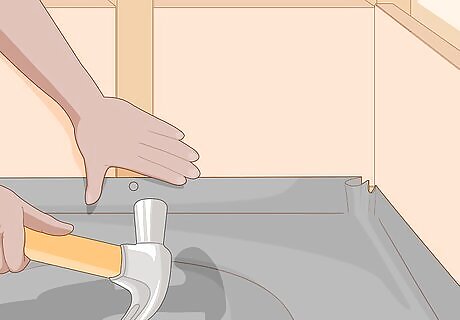
Secure the liner to the wall studs with nails or staples. Only nail the very top edge of the liner to the wall studs so there’s less risk of it leaking. Use roofing nails or woodworking staples on every wall stud to secure the liner in place. Work your way around the liner, ensuring that it stays smooth on the floor.
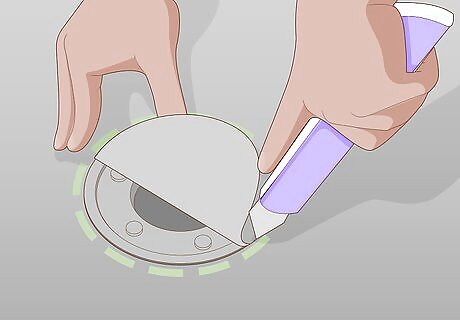
Cut holes in the liner for the drain. Feel through the liner to find the drain hole and the bolts sticking up from the flange. Use your utility knife to cut X-shapes into the liner over the hole and bolts so you can access them. Fold the flaps of the liner down into the drain hole so any water and moisture flows into the pipes. You can also cut the hole out entirely, but it may cause some water to leak between the drain and the liner.
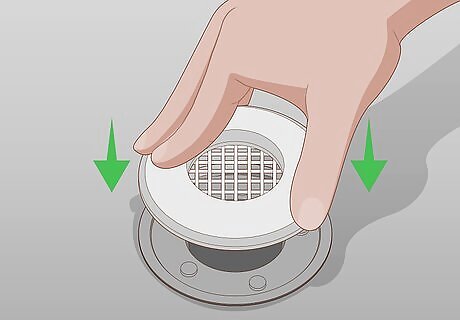
Screw the top part of the drain onto the bottom flange. The second part of your drain has an upper flange that attaches to the bottom using the bolts. Screw the top flange clockwise into the drain hole so it’s about 1–2 inches (2.5–5.1 cm) above the bottom flange. Then tighten the bolts on the bottom flange to secure it. Don’t screw the top flange into the drain until it’s flush since you need to add another layer of mortar.
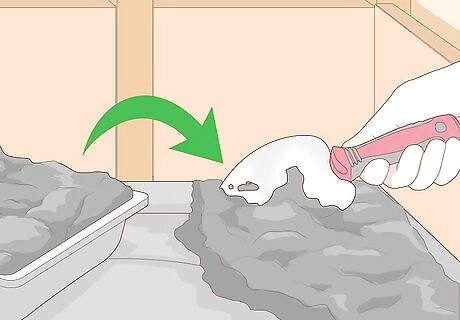
Apply another layer of mortar on top of the shower liner and let it dry. Mix more mortar and follow the same process as before. Start by applying a 1 ⁄2 in (3.8 cm) thick border around the edges and slope the mortar toward the drain. Get the mortar as smooth as possible so it doesn’t have any humps or valleys, or else water won’t drain easily. Check the mortar’s slope with a level frequently and smooth out any rough areas. Leave the mortar to dry for 24 hours to finish your shower pan. If you’re putting tile in your shower pan, be sure to leave enough space between the mortar and the top of the drain so the tile is flush with the drain.
Tiling the Shower
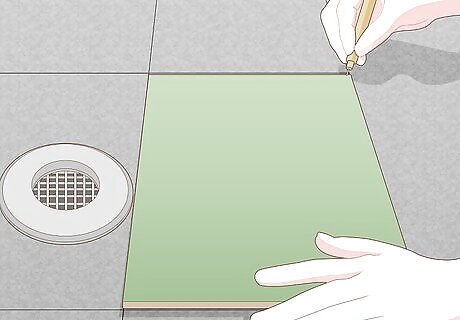
Dry-fit the tiles in the shower pan so you know how they fit. Take one of the tiles that you want to use for your shower pan and place it next to the drain. Trace around the tile with a pencil to mark how it fits on the shower pan. Keep placing the tile down and tracing it to see how many tiles you’ll need to use and what size you need to cut them if you need to. Choose tiles that match other fixtures in your bathroom so it looks like a cohesive space. The number of tiles you need depends on the size of your shower pan and the style that you’re using.
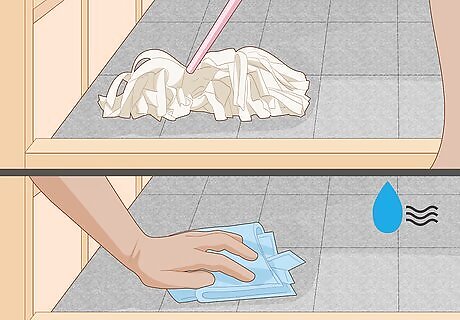
Wipe the mortar with a wet cloth to clean up any dust. The dust on your mortar can prevent the tiles from adhering to the shower pan. Wet a cleaning cloth with water and wipe the entire surface clean. Once the shower pan is clean, dry it off with a lint-free rag so the surface isn’t wet anymore. Don’t put tiles on your mortar while it’s wet or they may not adhere as well.
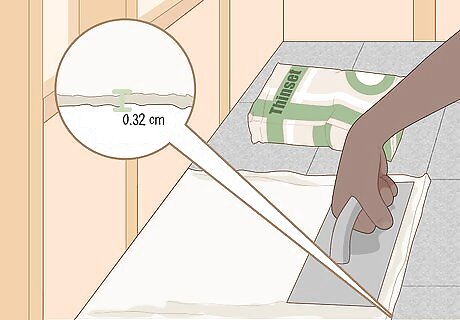
Apply an ⁄8 in (0.32 cm) layer of thinset on the shower pan. Only use enough thinset for 1-2 tiles at a time so it doesn’t set while you’re working. Use a flat trowel to scoop and spread out the thinset. Smooth the thinset with the trowel so there’s an ⁄8 in (0.32 cm) layer on the mortar. You can buy tile thinset from your local hardware store.
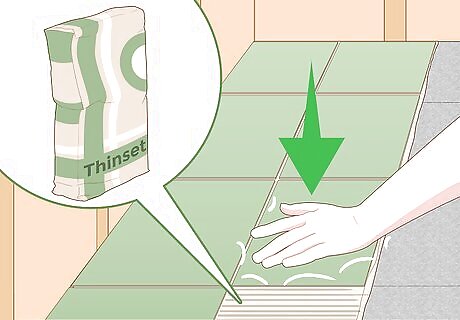
Press your tiles into the thinset to secure them. Set the tiles carefully on thinset so it lines up with the marks you drew earlier. Firmly push down on the tile so the bottom fully contacts the adhesive, or else your tiles may easily lift up. Wait 1-2 minutes before wiping any thinset off that came up between the tile joints. If you want all your tiles to be the same distance apart, then use tile spacers so the shower pan looks uniform.

Grout the tiles so they’re flush with the drain. Mix the grout in the container it came in or a large bucket. Pour some of the grout onto the tiles and spread it over your tiles with a flat trowel or rubber squeegee. Work the grout into the spaces between your tiles so water doesn’t get through and so the surface is flat. Once you apply the grout, let it dry for at least 1 hour. You can buy tile grout from your local home improvement or hardware store.















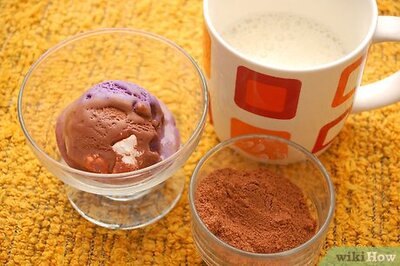
Comments
0 comment